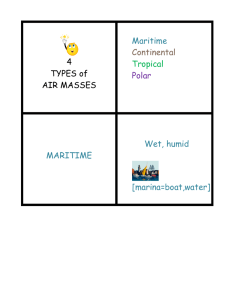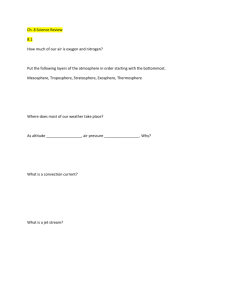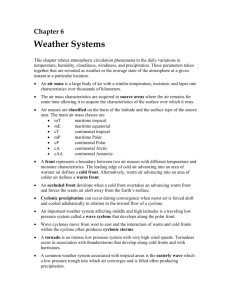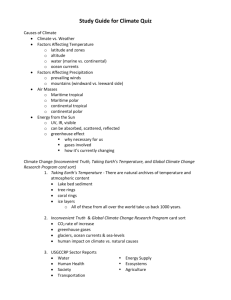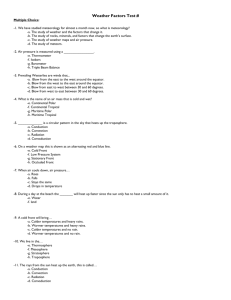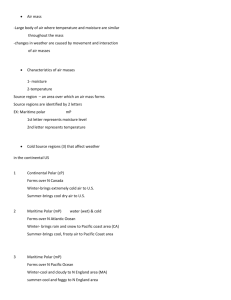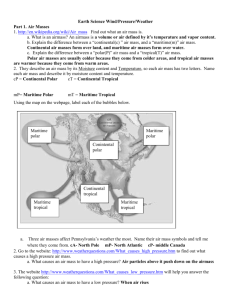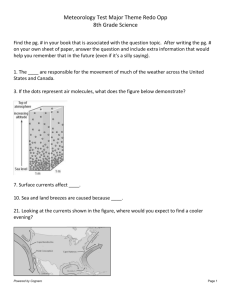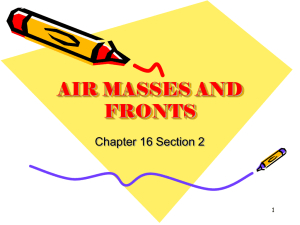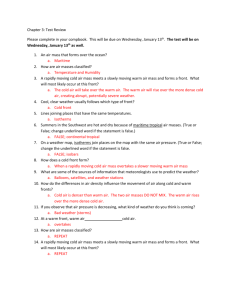File
advertisement
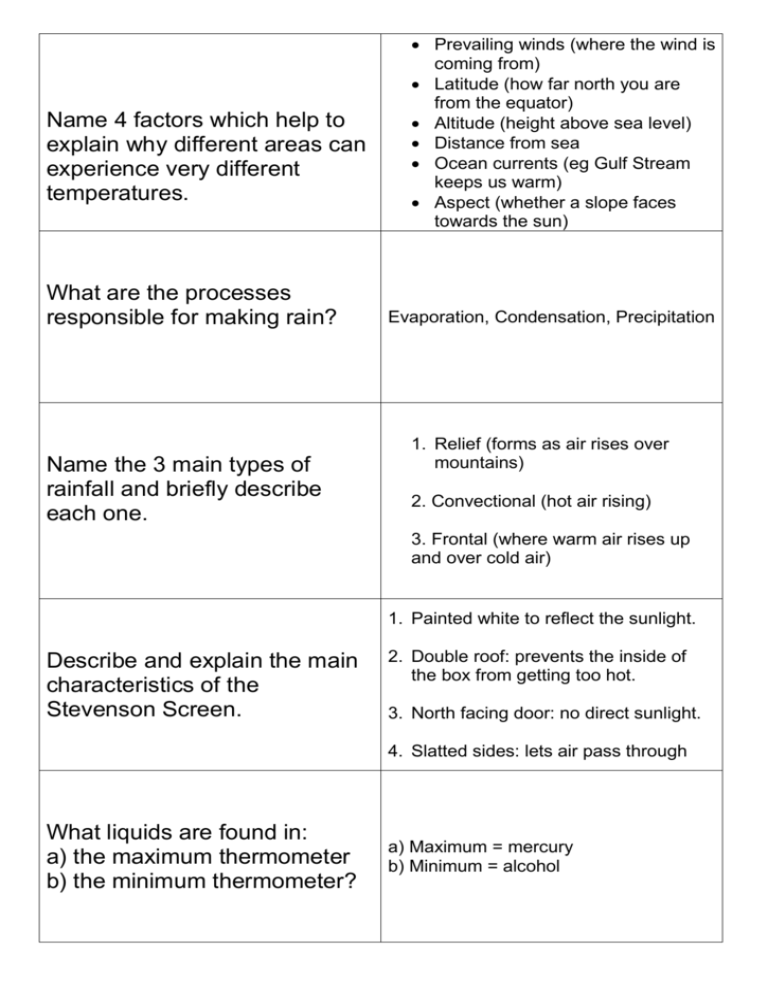
Name 4 factors which help to explain why different areas can experience very different temperatures. What are the processes responsible for making rain? Name the 3 main types of rainfall and briefly describe each one. Prevailing winds (where the wind is coming from) Latitude (how far north you are from the equator) Altitude (height above sea level) Distance from sea Ocean currents (eg Gulf Stream keeps us warm) Aspect (whether a slope faces towards the sun) Evaporation, Condensation, Precipitation 1. Relief (forms as air rises over mountains) 2. Convectional (hot air rising) 3. Frontal (where warm air rises up and over cold air) 1. Painted white to reflect the sunlight. Describe and explain the main characteristics of the Stevenson Screen. 2. Double roof: prevents the inside of the box from getting too hot. 3. North facing door: no direct sunlight. 4. Slatted sides: lets air pass through What liquids are found in: a) the maximum thermometer b) the minimum thermometer? a) Maximum = mercury b) Minimum = alcohol Name the instrument used to measure: a) Temperature b) Precipitation c) Wind Speed d) Hours of Sunshine Name 3 of the main air masses that influence the UK, and where do they come from?) (Make sure you know what an air mass is! It is a large body of air with similar characteristics throughout) What type of weather would you expect from: a) Continental airmass b) Maritime airmass c) Polar airmass d) Tropical airmass What forms when the Polar Maritime and Tropical Maritime meet over the Atlantic? Name the weather system associated with: a) Low pressure b) High pressure a) Maximum/minimum thermometer b) Rain Gauge c) Anemometer d) Sunshine recorder - Tropical maritime (from SW) - Polar maritime (from NW) - Arctic maritime (from N) - Polar continental (from NE) - Tropical continental (from SE) a) Dry conditions b) Wet conditions c) Cold d) Warm The polar front forms. This could possibly form into a depression. a) Low = a depression b) High = an anticyclone Make sure you know the sequence of a depression Go and learn the table! What is the area between the warm front and the cold front called? Name the types of cloud found at: a) the warm front b) the cold front Name 3 characteristics of an anticyclone What type of weather would you experience in: a) Winter Anticyclone b) Summer Anticyclone The warm sector a) Nimbo Status b) Cumulo Nimbus (note that Nimbo/Nimbus means 'rainbearing') - High pressure - Winds go CLOCKWISE - Very little wind - clear skies (no cloud forms as air is falling and warming up.. warm air can hold more moisture) a) Very cold (all the heat is lost at night as there is no clouds to keep the heat in), ground frost, clear skies, little wind b) Very hot (although temperatures do fall at night), clear skies, dry conditions, little wind
